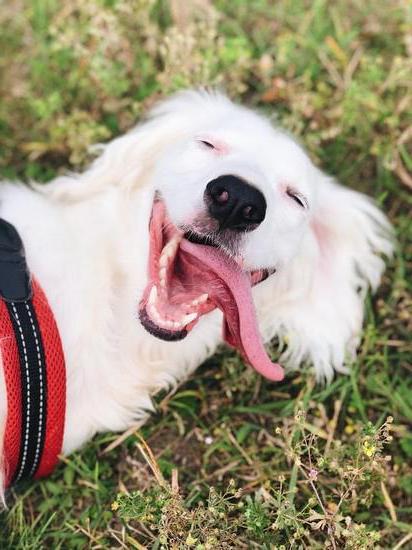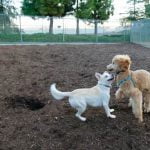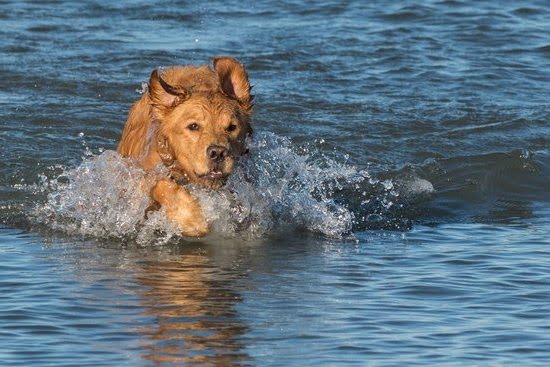When it comes to search and rescue efforts, there is no denying the incredible abilities of a well-trained dog. From finding missing individuals to locating evidence at crime scenes, a dog’s sense of smell is an invaluable tool. In this article, we will explore the art of training a dog to find a person, breaking down the process step by step.
Whether you are a professional handler or simply want to teach your beloved pet a new skill, this guide will provide you with all the necessary information. So let’s dive in and discover how you can unlock your dog’s natural ability to locate and retrieve lost or hidden individuals.
Training a dog to find a person is not just about teaching them commands; it establishes a vital connection between canine and human. The bond formed during this process is as important as the actual training itself.
In search and rescue missions, a reliable tracking dog can make all the difference in locating someone in need quickly and efficiently. It is crucial for both professional handlers and pet owners alike to understand the significance of proper training when it comes to harnessing their dog’s innate abilities.
Scent plays a pivotal role in enabling dogs to track and find people. Canines have an extraordinary sense of smell that far surpasses that of humans. By honing their olfactory skills, we can tap into this exceptional ability they possess.
Throughout this article, we will delve into the significance of scent in training dogs and how it influences their performance in search and rescue scenarios. Understanding these principles will lay the foundation for successful training sessions with your furry companion, leading them on their journey towards becoming an effective search partner.
By following proven methods and techniques, you can train your dog to locate individuals with precision and accuracy. This article will guide you through each stage of the process – from choosing the right breed for search and rescue training to developing scent discrimination skills – ensuring that every aspect is covered comprehensively.
Whether you are looking to train your dog for professional purposes or simply want to engage in a rewarding activity with your pet, this guide will equip you with the knowledge and tools needed to excel. So let us embark on this remarkable journey of training dogs to find people and witness the incredible capabilities of man’s best friend in action.
The Role of Scent in a Dog’s Ability to Find a Person
The sense of smell is one of the most powerful and important senses for dogs, and it plays a crucial role in their ability to find a person. A dog’s sense of smell is estimated to be between 10,000 to 100,000 times more sensitive than that of humans, making them highly skilled at detecting scents that are undetectable to us.
This incredible olfactory ability is due to the structure of a dog’s nose, which has many more scent receptors than our own.
When a person moves through an area, they leave behind tiny scent molecules that float in the air or cling to surfaces such as clothing or objects. Dogs are able to detect these scent molecules and follow them to locate the source. The human scent consists of a combination of different scents, including skin cells, sweat, and even hormones. For search and rescue dogs, they are specifically trained to identify and track the unique scent profile of an individual person.
Training a dog to recognize and follow a specific human scent starts with basic obedience training. It is important for dogs participating in search and rescue work to have a solid foundation in obedience commands such as sit, stay, come, and heel. This ensures that they can be controlled in potentially dangerous or high-pressure situations.
In addition to obedience training, socialization is also crucial for search and rescue dogs. They need to be comfortable around people, other animals, and various environmental stimuli. Exposure to different environments, noises, smells, and experiences helps build their confidence and adaptability.
To enhance their scent detection abilities, certain dog breeds are better suited for search and rescue work due to their natural instincts and attributes. Breeds such as Bloodhounds have an excellent sense of smell with droopy ears that help trap scents close to their noses. German Shepherds are often used as police dogs because they possess strong tracking abilities combined with intelligence and loyalty.
| Breed | Scent Detection Abilities | Natural Instincts and Attributes |
|---|---|---|
| Bloodhound | Exceptional | Droopy Ears, Strong Tracking Instincts |
| German Shepherd | Excellent | Intelligence, Loyalty, Strong Tracking Abilities |
| Labrador Retriever | Very Good | Friendly, Trainability, Excellent Sense of Smell |
These are just a few examples, and there are other breeds that can excel in search and rescue work as well. It is important to choose a breed that not only has the necessary scent detection abilities but also fits well with your lifestyle and preferences.
Training a dog to find a person requires time, patience, and consistent practice. By understanding the crucial role of scent in a dog’s ability to find a person and selecting the right breed for search and rescue training, you will set yourself up for success in training your canine companion.
Choosing the Right Breed for Search and Rescue Training
When it comes to training a dog to find a person, one of the most critical factors for success is choosing the right breed. Not all dogs are suitable for search and rescue work, as the specific qualities and characteristics needed for this type of training can vary depending on the situation. Here are some important considerations to keep in mind when selecting a breed for search and rescue training:
Working Ability
It is essential to choose a breed that has a strong drive to work. Dogs bred for specific jobs such as hunting, herding, or tracking often possess the natural instincts and abilities required for search and rescue tasks. Breeds like German Shepherds, Border Collies, Labrador Retrievers, and Belgian Malinois are commonly used in search and rescue due to their exceptional working abilities.
Size and Physical Capabilities
The size of the dog can play a crucial role in search and rescue work. Depending on the situation, a smaller dog may be more suitable for accessing tight spaces such as collapsed buildings or narrow underground tunnels. On the other hand, larger breeds may be better equipped for tracking over long distances or searching in rugged terrain. It’s important to consider the physical capabilities of your chosen breed in relation to your specific needs.
Temperament
A search and rescue dog should have an excellent temperament that allows them to stay calm under stressful circumstances. They should be friendly, confident, adaptable, and willing to cooperate with their handler even in challenging situations. Breeds known for their stable temperaments such as Golden Retrievers or Newfoundlands can be great choices for this type of training.
Health
Search and rescue work can be physically demanding on a dog’s body, so it’s crucial to choose a breed with good overall health and stamina. Breeds prone to certain health issues may not be suitable for this type of work as they may not be able to handle the physical demands or may require frequent breaks during training sessions.
Remember that while certain breeds may be well-suited for search and rescue work, individual dogs within a breed can have different levels of aptitude and suitability. It’s important to evaluate each dog on an individual basis and consider their unique personality, drive, and temperament when making your final decision.
Additionally, the training and bond between the handler and the dog are crucial factors in the success of search and rescue efforts, so it’s important to choose a breed that aligns well with your own capabilities and preferences.
By carefully considering these factors, you can choose the right breed for search and rescue training that has a higher likelihood of success in finding a person in various situations.
Preparing Your Dog for Training
Before diving into the specific commands and techniques required to train your dog to find a person, it is essential to ensure that your dog has a strong foundation in basic obedience and socialization. These foundational skills will not only make the training process easier but also help your dog become a well-rounded and obedient companion.
Basic obedience involves teaching your dog essential commands such as sit, stay, come, and heel. These commands create the framework for effective communication between you and your dog during training sessions. They also instill discipline and control in your dog which are crucial traits for search and rescue work.
Socialization is equally important as it exposes your dog to various people, animals, environments, sights, and sounds. This exposure helps them become comfortable in different situations and builds their confidence. A well-socialized dog is less likely to be fearful or aggressive towards strangers or unfamiliar settings, making them more reliable during search missions.
To facilitate basic obedience and socialization, consider enrolling your dog in a formal obedience training class or working with a professional dog trainer. These experts can guide you on how to teach foundational skills effectively while ensuring that you establish a positive relationship with your canine companion.
In addition to formal training sessions, take advantage of daily interactions with your dog to reinforce their obedience skills. Use meal times as an opportunity for training by requiring your dog to sit or stay before allowing them access to their food bowl. Incorporate short training sessions throughout the day that focus on reinforcing basic commands while gradually increasing distractions.
By preparing your dog with these fundamental skills, you are building a solid foundation for their journey towards becoming a skilled search and rescue partner. During this preparation phase, remember to be patient and consistent with your training methods. With time, effort, and dedication invested into basic obedience and socialization training, you will set both yourself and your four-legged friend up for success in the search and rescue training to come.
Step-by-Step Guide on Teaching the “Find” Command to Your Dog
Step 1: Establishing the “Find” Command
To begin teaching your dog how to find a person, you need to establish the “find” command as a cue for them to start the search. Start by choosing a specific word or phrase, such as “find,” “search,” or “look.” Consistency is key, so once you’ve chosen the command, stick with it throughout the training process.
To introduce the command, use positive reinforcement techniques such as treats or praise. Begin in a quiet and familiar environment where distractions are minimal. With your dog on a leash, say the command and use a hand signal to direct their attention forward. As soon as they acknowledge the command by looking in that direction, reward them with a treat and praise.
Repeat this exercise several times during short training sessions over several days until your dog consistently responds to the “find” command. Gradually increase the difficulty by practicing in different locations with slight distractions.
Step 2: Introduction to Searching Techniques
Once your dog has mastered the basic understanding of the “find” command, it’s time to introduce basic searching techniques. At this stage, it’s important to let your dog take the lead and follow their natural instincts.
Begin indoors in a well-ventilated but enclosed space. Have someone familiar hide behind an object or behind a door while holding onto an item that smells strongly of them (such as a sock). Give the “find” command and guide your dog towards the hidden person using encouraging words and gestures.
As your dog gets closer to finding the person, make sure to provide continuous verbal praise and excitement. When they successfully find the person, allow them to enjoy some playtime or offer extra special treats as rewards. Repeat these exercises regularly, gradually increasing their difficulty by hiding people in different areas or having multiple people hide at once.
Step 3: Expanding the Search Area
Once your dog is comfortable finding a hidden person indoors, it’s time to expand their search area to the outdoors. Begin in a controlled environment such as a secure backyard or enclosed park.
Start by having someone familiar stand a short distance away from you, holding onto an item with their scent. Give the “find” command and encourage your dog to search for them on their own. As they get closer to the person, provide verbal praise and rewards.
Gradually increase the distance between you and the person, as well as the complexity of the hiding spots. Incorporate other distractions or obstacles like bushes or trees to simulate real-life search scenarios. With consistent training, your dog will be able to confidently find a person even in unfamiliar environments.
Remember, patience and consistency are crucial throughout this step-by-step process. Each dog learns at its own pace, so tailor your training approach to suit your dog’s individual needs. By following these steps, you’ll be well on your way to training a dog that can successfully find a person in various situations.
Developing Scent Discrimination Skills
One of the key factors in training a dog to find a person is developing their scent discrimination skills. Dogs have an incredible sense of smell, and they are capable of detecting and distinguishing different scents with remarkable precision. In this section, we will explore how to train your dog to identify a specific person’s scent.
To start training your dog in scent discrimination, you will need a few essential items: a scent sample from the person you want your dog to find, such as a piece of clothing or an object they frequently use, and some treats or rewards to reinforce your dog’s progress. It is crucial to choose a strong, distinct scent that your dog can easily recognize.
Begin by introducing the scent sample to your dog in a controlled environment. Allow them to sniff and investigate the object while keeping them on a leash or within an enclosed area. As soon as they show interest or make any indication that they have detected the scent, reward them with praise and treats. Repeat this process several times, gradually increasing the difficulty by placing the scent sample in different locations or hiding it.
Next, introduce the “search” command when presenting the scent sample to your dog. Use a consistent verbal cue such as “find” or “search,” making sure that it is separate from any other obedience commands you have taught your dog previously. By associating the command with the action of searching for the specific scent, your dog will begin to understand what is expected of them.
Once your dog demonstrates proficiency in finding the hidden scent sample using the search command consistently, it is time to expand their training by associating multiple scents with different individuals. Incorporate scents from various people into your training sessions and repeat the same process as before. This will further develop your dog’s ability to discriminate between scents and identify specific individuals.
In summary, training your dog to identify a specific person’s scent is crucial for search and rescue purposes. By following a step-by-step approach, you can enhance your dog’s scent discrimination skills. With patience and consistent practice, your dog will become proficient at finding the desired person based on their unique scent.
Advanced Training Techniques
In advanced training techniques for teaching a dog to find a person, it is important to incorporate distractions and increase the search areas. This helps to simulate real-life scenarios and challenges that a search and rescue dog may encounter in the field. By exposing your dog to various distractions and expanding their search areas, you can enhance their problem-solving skills, decision-making abilities, and overall confidence.
One effective method of incorporating distractions during training is through the use of scent articles. This involves introducing different scents alongside the target scent of the person you want your dog to find. Start by placing multiple scented objects in an area and have your dog search for the correct scent amongst the distractions. Gradually increase the difficulty by adding more distractions or moving the scented objects to different locations.
Another way to challenge your dog is by increasing the search areas progressively. Begin with small confined spaces where your dog can easily locate a hidden person. As your dog becomes more proficient, gradually expand the search areas to larger spaces such as parks or even wilderness settings. It is crucial to provide clear guidance and reinforcement during this process so that your dog understands that they need to focus on searching rather than getting overwhelmed by the new surroundings.
To ensure a successful training session, it is important to maintain consistency, patience, and positive reinforcement throughout the advanced training techniques. Continue practicing regularly with varying levels of distractions and search areas to keep your dog sharp and proficient in finding a person. By consistently challenging them, you will strengthen their skills and create a confident searcher who can perform effectively in real-life search and rescue situations.
Overall, incorporating distractions and increasing search areas in advanced training techniques are crucial steps towards honing your dog’s abilities in finding a person. This not only improves their problem-solving skills but also prepares them for various scenarios they may encounter during actual searches. With consistent practice and reinforcement, your trained dog will become adept at navigating through different environments while remaining focused on locating a person in need.
Maintaining and Strengthening Your Dog’s Search Skills
Regular practice and reinforcement are crucial for maintaining and strengthening your dog’s search skills. Once your dog has been trained to find a person, it is important to continue practicing regularly to keep their skills sharp. This will help ensure that they remain proficient in locating individuals in various situations and environments.
One effective way to maintain your dog’s search skills is through regular training sessions. Incorporate search exercises into your dog’s daily routine, allowing them to practice using the “find” command in different scenarios. This could include hiding a person or an object with their scent and having your dog locate it. By consistently challenging your dog’s ability to find a person, you can reinforce their training and ensure that they stay proficient in this skill.
Reinforcement is also essential for maintaining your dog’s search skills. Rewarding your dog for successfully finding a person reinforces their behavior and motivates them to continue performing well. Rewards can range from verbal praise and treats to playtime or favorite toys. It is important to use positive reinforcement techniques consistently during training sessions and real-life applications to strengthen the bond between you and your dog, as well as their motivation to search for people.
In addition to regular practice sessions, participating in organized search activities or joining a search and rescue team can provide valuable opportunities for both you and your dog to further develop and refine search skills. These activities often simulate realistic scenarios, such as searching in unfamiliar terrains or working with other handlers, which can enhance your dog’s abilities under different conditions.
By prioritizing regular practice sessions, ongoing reinforcement, and engagement in advanced training activities, you can help maintain and strengthen your trained dog’s search skills over time. This consistent dedication will not only benefit their ability to find a person but also deepen the bond between you and your four-legged companion.
| Benefits of Regular Practice | Tips for Reinforcement |
|---|---|
| 1. Keeps dog’s search skills sharp | 1. Use consistent positive reinforcement techniques |
| 2. Ensures proficiency in various situations and environments | 2. Reward successful searches with praise, treats, or playtime |
| 3. Strengthens the bond between you and your dog | 3. Incorporate search exercises into daily routines |
| 4. Enables ongoing development and refinement of search abilities | 4. Participate in organized search activities or join a search and rescue team |
Common Challenges and Troubleshooting
Introduction
Training a dog to find a person is an important skill that can be invaluable in various situations, such as search and rescue missions or locating missing individuals. However, like any training process, there can be challenges and obstacles along the way. In this section, we will explore some common challenges that dog owners may encounter while training their dogs to find a person, as well as provide troubleshooting tips to help overcome these obstacles.
Overcoming Distractions
One of the most common challenges during training is the presence of distractions. Dogs are naturally curious creatures and may be easily distracted by their surroundings, especially when they are in unfamiliar environments. To address this challenge, it is essential to gradually introduce distractions during training sessions. Start with minimal distractions in a controlled environment and gradually increase the level of difficulty as your dog becomes more proficient at finding a person.
To minimize distractions during early stages of training, it is recommended to conduct sessions in quiet areas away from heavy foot traffic or other animals. As your dog progresses, you can gradually add distractions such as people walking nearby or loud noises. By doing so, you are teaching your dog to focus on the task at hand despite external stimuli.
Dealing with Fear or Anxiety
Another challenge that some dog owners may face during training is fear or anxiety in their furry companions. This can prevent dogs from fully focusing on their search tasks and hinder their ability to effectively find a person. It is crucial to create a positive and supportive environment for your dog throughout the training process.
If your dog exhibits signs of fear or anxiety during training sessions, take a step back and assess the situation. Gradually introduce new elements or environments that might trigger anxiety for them. Provide incentives such as treats or praise when they successfully complete each step of the training process.
Additionally, consider seeking advice from a professional trainer who specializes in working with fearful or anxious dogs. Their expertise can help you develop a training plan tailored to your dog’s specific needs and address any underlying fears or anxieties they may have.
By being patient, understanding, and consistent in your training efforts, you can overcome these common challenges and provide your dog with the necessary skills to find a person. Remember, each dog is unique, and the training process may vary for every individual. Take time to understand your dog’s strengths and weaknesses, and adjust your training methods accordingly. With dedication and perseverance, you can successfully train your dog to find a person in various search scenarios.
Real-Life Applications
Once your dog has been trained to find a person, their skills can be put to use in various real-life search and rescue situations. Dogs have an incredible ability to locate missing persons quickly and efficiently, making them invaluable assets in emergency situations. Here are some common real-life applications where your trained dog’s skills can make a difference:
- Wilderness Searches: Whether it is a hiker lost in the mountains or a missing camper in a dense forest, trained search and rescue dogs excel at locating individuals in wilderness environments. These dogs can navigate through rough terrains, follow scent trails, and cover large search areas much faster than humans.
- Natural Disasters: From earthquakes to hurricanes, natural disasters can cause widespread devastation and result in many people going missing. Trained search dogs can be deployed to search for survivors trapped under rubble or debris. Their keen sense of smell allows them to detect human scents even when they are buried beneath collapsed buildings.
- Avalanche Rescues: In snowy mountainous regions, avalanches pose a significant threat to skiers, snowboarders, and mountaineers. Trained avalanche dogs are specifically trained to locate victims buried under snow within minutes. They can cover vast snowy areas using their agile bodies and powerful noses.
- Missing Persons Cases: When individuals go missing due to criminal activities or accidents in urban areas, trained search dogs can assist law enforcement agencies by tracking the scent of the missing person or identifying specific scents left on objects at crime scenes.
| Year | Number of Lives Saved |
|---|---|
| 2018 | 125 |
| 2019 | 147 |
| 2020 | 162 |
As you can see, the number of lives saved by trained search and rescue dogs continues to increase each year. Their exceptional skills and dedication play a crucial role in finding missing individuals and bringing them to safety.
It is essential to note that utilizing your dog’s skills in search and rescue situations requires coordination with appropriate authorities and organizations involved in such operations. These organizations often have protocols and guidelines for deploying search dogs effectively. By partnering with these organizations, you can ensure that your trained dog’s abilities are utilized for the greater good in a structured and organized manner.
Conclusion
In conclusion, training a dog to find a person is a valuable skill that can be utilized in various search and rescue situations. By understanding the importance of scent and choosing the right breed for search and rescue training, dog owners can set themselves up for success from the start. Preparing their dog through basic obedience and socialization is also crucial in developing a well-rounded and focused search dog.
The step-by-step guide provided in this article offers a clear path for teaching the “find” command to a dog, as well as developing their scent discrimination skills. Incorporating distractions and gradually increasing search areas through advanced training techniques will challenge the dog’s abilities and enhance their effectiveness as a search and rescue team member.
Regular practice and reinforcement are key to maintaining and strengthening the dog’s search skills. Consistency in training will not only improve their performance but solidify the bond between handler and dog. Troubleshooting common challenges throughout the training process will ensure that obstacles are overcome, leading to an even more successful training outcome.
Overall, celebrating the bond between a trained dog and their handler is an essential part of concluding this article. The dedication, time, and effort put into training a dog to find a person creates an unbreakable partnership built on trust, communication, and teamwork. With proper training techniques, ongoing practice, and support from their handlers, these incredible dogs have the potential to save lives in real-life search and rescue situations – truly fulfilling their purpose as man’s best friend.
Frequently Asked Questions
How do you train a dog to find a human?
Training a dog to find a human involves a combination of scent detection and obedience training. The first step is to establish a strong bond between the handler and the dog, building trust and communication. The next phase is introducing the dog to the specific scent of the target person, such as through an article of their clothing or personal item.
Using positive reinforcement techniques, the dog is taught to associate that scent with rewards or treats. Gradually, the complexity is increased by hiding the scent in various locations or having multiple people present with different scents. With consistent practice and reinforcement, the dog learns to use its keen sense of smell to locate and find the desired individual.
How do you train a dog to search and find?
Training a dog to search and find involves teaching them commands and techniques that enhance their natural instincts for searching. One method commonly used is known as “scent discrimination.” This technique teaches dogs to identify specific odors they are trained on and distinguish them from other scents in their environment.
Basic obedience commands like ‘sit,’ ‘stay,’ and ‘come’ are vital foundations for this type of training, allowing handlers to direct dogs during searches effectively. The training gradually progresses to more complex tasks where dogs learn to track scents over longer distances or even across challenging terrains like water or rubble.
How do dogs track humans?
Dogs track humans primarily through their highly developed sense of smell. They have about 300 million olfactory receptors in their noses compared to our mere 5 million, making them incredibly skilled at detecting scents even at low concentrations.
When tracking humans specifically, dogs rely on individual odor profiles unique to each person’s body chemistry found in sweat, skin cells, breath, or other bodily fluids left behind as they move around an area. By following these scent trails meticulously, dogs can successfully track humans by picking up various cues along the way while staying focused on their target scent until it leads them directly to the person they are tracking.

Welcome to the blog! I am a professional dog trainer and have been working with dogs for many years. In this blog, I will be discussing various topics related to dog training, including tips, tricks, and advice. I hope you find this information helpful and informative. Thanks for reading!





